Come join us now, and enjoy playing your beloved music and browse through great scores of every level and styles!
Can’t find the songbook you’re looking for? Please, email us at: sheetmusiclibrarypdf@gmail.com We’d like to help you!
Table of Contents
Elton John – Goodbye Yellow Brick Road, piano solo, sheet music, Noten, partitura, spartiti, 楽譜, 乐谱

Best Sheet Music download from our Library.
Browse in the Library:
Or browse in the categories menus & download the Library Catalog PDF:

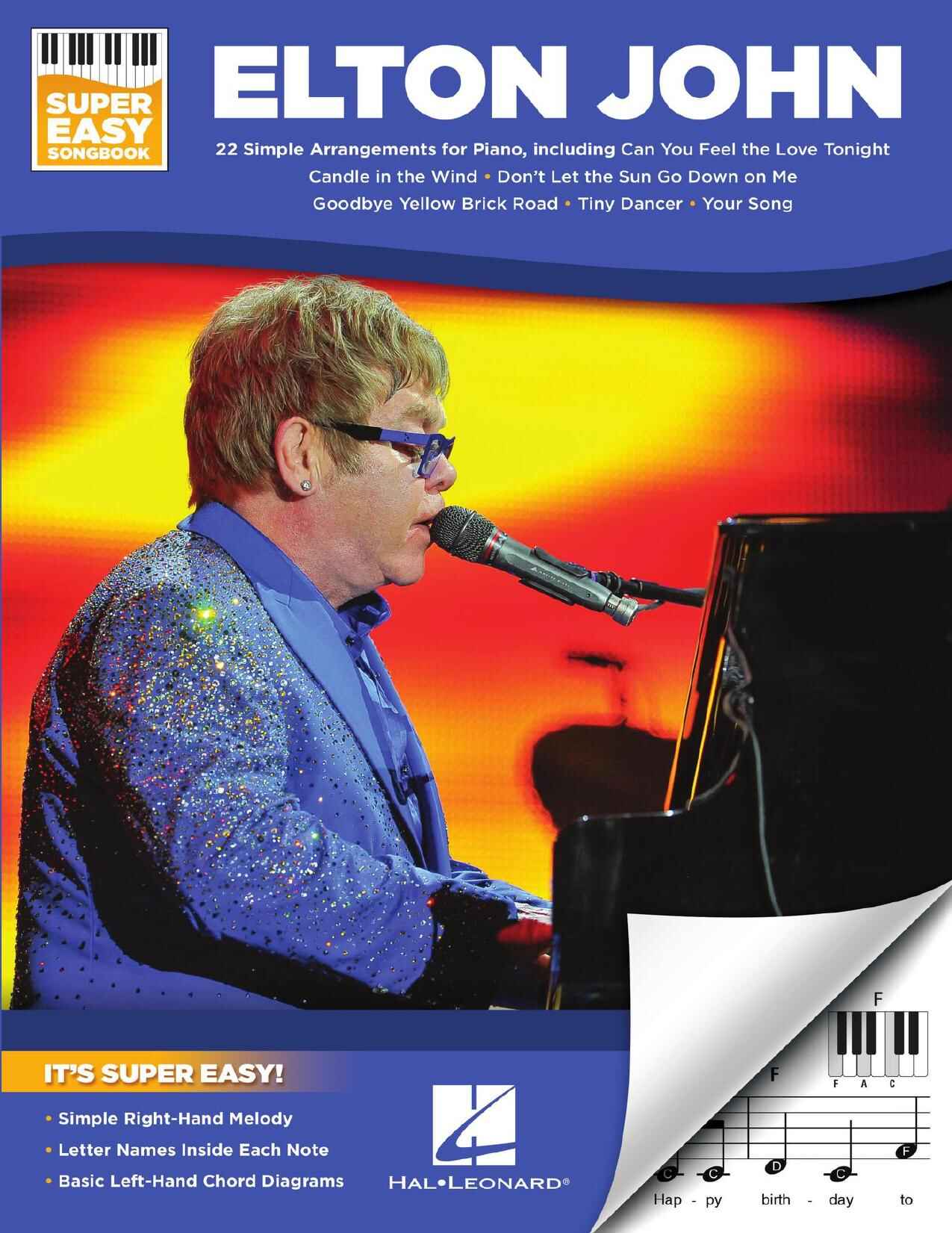
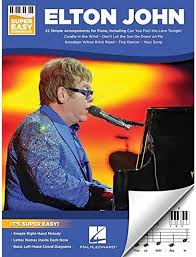



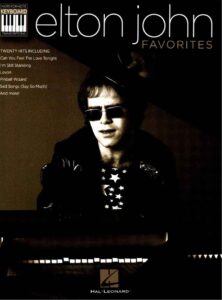

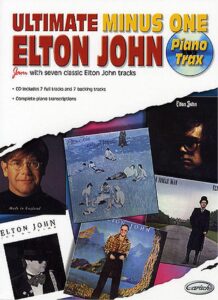
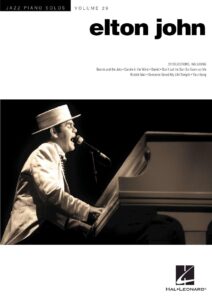
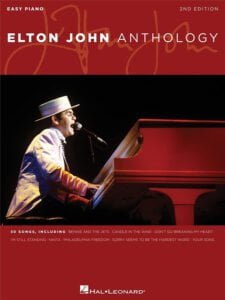
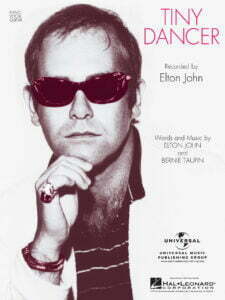

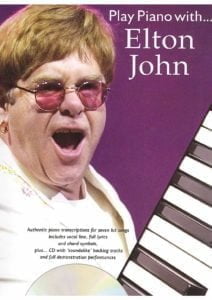
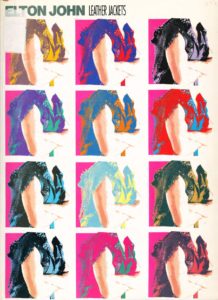
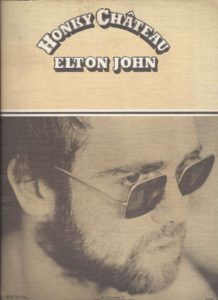
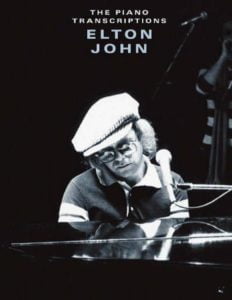
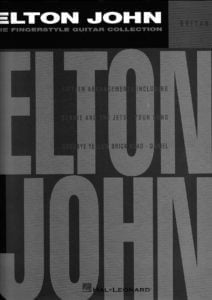
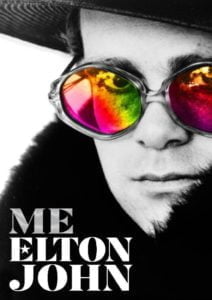







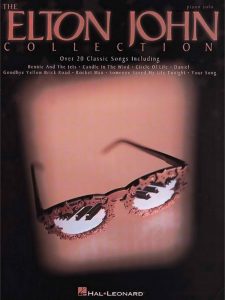

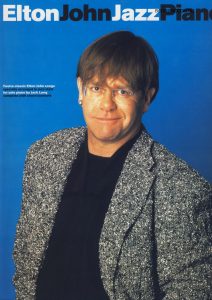
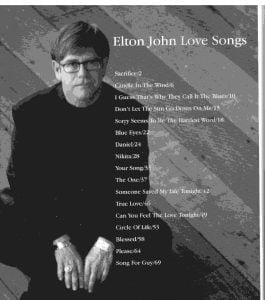
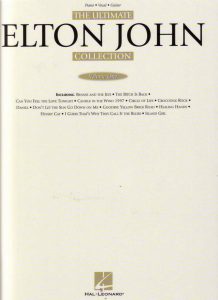

Please, subscribe to our Library.
If you are already a subscriber, please, check our NEW SCORES’ page every month for new sheet music. THANK YOU!
Goodbye Yellow Brick Road: Elton John’s Crowning Achievement
Few works in popular music history combine artistry, commercial success, and cultural impact as seamlessly as Elton John’s 1973 double album Goodbye Yellow Brick Road and its reflective title track. The album, sprawling across 17 songs, showcases Elton John and lyricist Bernie Taupin at the height of their creative partnership, blending stylistic diversity with deeply personal storytelling. The song “Goodbye Yellow Brick Road,” in particular, stands as a timeless meditation on fame, illusion, and the yearning for authenticity. Together, they represent Elton’s defining masterpiece—a work that not only defined the 1970s but continues to resonate across generations.
The Road to Goodbye Yellow Brick Road
By the early 1970s, Elton John was not just a pop star—he was a phenomenon. With albums like Honky Château (1972) and Don’t Shoot Me I’m Only the Piano Player (1973), he had become one of the world’s most successful recording artists. Singles such as “Your Song,” “Tiny Dancer,” and “Rocket Man” had cemented his reputation as a hitmaker with unusual depth. His flamboyant stage persona—glittering costumes, oversized glasses, and boundless charisma—made him a symbol of the decade’s extravagance.
Yet Elton and Bernie Taupin were restless. Having mastered the three- and four-minute pop song, they sought to create something more ambitious, a record that could showcase their versatility while pushing creative boundaries. The result was Goodbye Yellow Brick Road, a double album that would not only meet these goals but exceed them in ways few could have predicted.
Recording at the Château
The recording sessions for the album were themselves something of a legend. Initially, Elton and his band had intended to record in Jamaica, inspired by the island’s recent hosting of The Rolling Stones. But logistical and technical difficulties—including equipment issues and civil unrest—made the plan untenable. The team decamped to Château d’Hérouville in France, a studio Elton already knew well, having recorded there for Honky Château.
The Château was a creative paradise. Removed from the distractions of London or Los Angeles, Elton, Bernie, and the band could focus on their craft in a near-communal setting. Elton’s touring band—Davey Johnstone on guitar, Dee Murray on bass, Nigel Olsson on drums, and Ray Cooper on percussion—had by then become a finely tuned machine. Their chemistry allowed them to navigate the album’s stylistic breadth, from hard rock to tender balladry, with apparent ease.
Elton himself was in peak form. Famously, he often composed music to Bernie’s lyrics in a matter of minutes, sitting at the piano and conjuring melodies almost instinctively. At the Château, this gift flourished. The result was not just a collection of songs but a coherent artistic statement.
A Kaleidoscope of Styles
Goodbye Yellow Brick Road opens with one of rock’s most ambitious introductions: “Funeral for a Friend/Love Lies Bleeding.” The nearly 11-minute suite begins with an instrumental overture—synthesizers mimicking the grandeur of a requiem—before exploding into a full-throttle rocker. It set the tone for the album: bold, expansive, and unafraid of theatricality.
From there, the album moves through a dazzling variety of styles:
- Glam and Rock: “Saturday Night’s Alright for Fighting” channels barroom brawls and teenage rebellion into a high-energy anthem. “Bennie and the Jets,” with its stomping beat and satirical lyrics about a fictitious glam-rock band, became an unlikely hit, particularly in the U.S., where audiences adored its campy swagger.
- Balladry and Reflection: “Candle in the Wind,” originally a tribute to Marilyn Monroe, is a tender meditation on the fleeting nature of fame. The title track, “Goodbye Yellow Brick Road,” is one of Elton’s most poignant ballads, wistfully rejecting the artificiality of stardom.
- Experimentation: Songs like “This Song Has No Title” and “The Ballad of Danny Bailey (1909–34)” showcase Elton and Bernie’s willingness to tell unconventional stories, blurring the lines between narrative and performance.
- Homage and Parody: “Jamaica Jerk-Off” nods to the reggae influence of their ill-fated Jamaican sessions, while “Your Sister Can’t Twist (But She Can Rock ’n’ Roll)” humorously references 1950s rock ’n’ roll.
This stylistic variety was both risky and rewarding. Instead of diluting the album’s identity, the eclecticism became its strength, reflecting Elton’s multifaceted artistry.
The Title Track: A Farewell to Illusion
Among the album’s highlights, the title song Goodbye Yellow Brick Road holds a special place. Released as a single in October 1973, it quickly climbed the charts, peaking at No. 2 in the U.S. and No. 4 in the U.K. But its lasting impact lies beyond chart positions.
Bernie Taupin’s Lyrics
The song’s imagery draws from The Wizard of Oz, in which Dorothy follows the yellow brick road toward an idealized land. For Taupin, the metaphor symbolized the glittering promise of fame and fortune. Yet the narrator rejects this path, longing instead for simplicity:
“So goodbye yellow brick road / Where the dogs of society howl.”
Taupin, who grew up in rural Lincolnshire, often infused his lyrics with nostalgia for pastoral life. Here, he contrasts that authenticity with the “hunting the horny back toad”—a vivid, almost surreal image of returning to earthy reality. The song speaks to disillusionment, the desire to step away from the superficial world of celebrity.
Elton’s Music
Elton John’s setting of Taupin’s words elevates them into one of the most beautiful ballads of the rock era. The song’s harmonic shifts, moving from major to minor tonalities, underscore the bittersweet tone. His vocal performance—restrained yet emotionally charged—captures the ache of longing and resignation.
The arrangement is lush without being overbearing. Strings, synthesizers, and backing vocals create a cinematic sweep, yet the piano remains central. It is a masterclass in marrying lyric and melody to create a song that feels timeless.
Reception and Impact
When released, Goodbye Yellow Brick Road was met with near-universal acclaim. Critics praised its ambition and variety, and audiences embraced it wholeheartedly. The album spent eight weeks at No. 1 on the U.S. Billboard 200 and has sold over 30 million copies worldwide, making it one of the best-selling albums of all time.
The singles—“Saturday Night’s Alright for Fighting,” “Bennie and the Jets,” “Candle in the Wind,” and “Goodbye Yellow Brick Road”—all became classics in their own right. Together, they demonstrated Elton John’s ability to dominate both the charts and the cultural conversation.
The title track quickly became a staple of Elton’s live shows. It has been performed at countless concerts, including the Farewell Yellow Brick Road tour (2018–2023), which served as a poignant bookend to his touring career.
Legacy of the Album
Nearly fifty years after its release, Goodbye Yellow Brick Road remains a towering achievement in popular music. Its influence can be felt across genres, from glam rock to pop balladry. For many fans and critics, it is Elton John’s magnum opus—the album where his gifts as a performer, composer, and collaborator converged most perfectly.
Cultural institutions have recognized its significance. Rolling Stone consistently ranks it among the greatest albums of all time, and in 2003, it was inducted into the Grammy Hall of Fame. Musicians across generations cite it as an inspiration, and its songs continue to find new audiences through film, television, and cover versions.
The album also stands as a testament to the Elton John–Bernie Taupin partnership. Their ability to blend Taupin’s evocative, often enigmatic lyrics with Elton’s instinctive melodic genius remains one of the most successful collaborations in rock history.
Goodbye Yellow Brick Road in Context
The album’s release in 1973 came at a pivotal moment in rock. Glam rock was at its height, progressive rock bands were pushing musical boundaries, and singer-songwriters were carving out personal narratives. Elton John managed to synthesize these trends while transcending them, creating a work that was both of its time and timeless.
The title track’s themes of disillusionment with fame were particularly prescient. As the 1970s unfolded, many artists—from David Bowie to John Lennon—grappled with the cost of celebrity. In this sense, “Goodbye Yellow Brick Road” is not just a personal statement but a broader cultural reflection on the illusions and pitfalls of stardom.
The Eternal Yellow Brick Road
Elton John’s Goodbye Yellow Brick Road is more than an album—it is a cultural landmark. Its diversity of styles, emotional depth, and ambitious scope capture the spirit of an era while transcending it. The title track distills the universal longing to trade glamour for authenticity, making it as relevant today as it was in 1973.
In both song and album, Elton John and Bernie Taupin created something extraordinary: a work that dazzles with its variety, moves with its sincerity, and endures as a testament to one of the greatest partnerships in music history. As Elton himself bid farewell to touring with his Farewell Yellow Brick Road tour, the song’s message came full circle, reminding us all that even the brightest lights of fame are no substitute for the grounding truths of home, authenticity, and self.
Browse in the Library:
Or browse in the categories menus & download the Library Catalog PDF:
Excellent choice — “Goodbye Yellow Brick Road” is one of those Elton John songs that rewards a close musical reading. Here’s a musical analysis of the song itself:
Musical Analysis of “Goodbye Yellow Brick Road”
Key, Form, and Harmony
- Key: The song is primarily in F major, though it frequently drifts into its relative minor (D minor) and touches on other tonal centers, giving it a bittersweet quality.
- Tempo and Meter: A slow ballad in common time (4/4), around 70–75 BPM. The pacing allows space for the lyrics and gives the melody room to soar.
- Form:
- Intro (piano + synth/strings)
- Verse 1
- Chorus
- Verse 2
- Chorus
- Bridge/Interlude
- Verse 3
- Chorus (repeated, with variation)
- Outro fade
The repetition of the chorus, framed by verses, reinforces the reflective, almost hymn-like structure.
Harmonic Motion
The verses move between I (F major), vi (D minor), and IV (B♭ major), creating a gentle cycle that feels wistful rather than resolved. This I–vi–IV pattern is common in pop ballads, but Elton enriches it with secondary dominants and chromatic voice-leading that keep it fresh.
The chorus makes a striking turn:
- “So goodbye yellow brick road…” begins on the subdominant (B♭ major) instead of the tonic. Starting the refrain away from “home” heightens the sense of leaving, fitting perfectly with the lyrical theme of departure.
- The movement back to the tonic feels delayed and indirect, mirroring the narrator’s reluctance and uncertainty.
Melody and Vocal Delivery
Elton John’s vocal line is deceptively simple but emotionally powerful:
- Range: Spans about an octave, sitting comfortably in Elton’s tenor range.
- Contour: Stepwise motion with occasional leaps on emotionally charged words (“society howl,” “yellow brick road”). The melodic rise and fall mirrors the ebb of longing and resignation.
- Phrasing: Elton sings in long, legato phrases, often letting notes linger before resolving, which emphasizes the song’s reflective mood.
The chorus melody, beginning high and descending, symbolizes the act of letting go—literally falling away from the “yellow brick road.”
Instrumentation and Arrangement
The production is lush but carefully balanced, a hallmark of Elton’s early ’70s sound.
- Piano: Central to the song, with arpeggiated chords and gentle fills providing both harmony and texture. Elton’s playing is restrained compared to his showier rock numbers, underscoring the ballad’s intimacy.
- Strings and Synthesizers: Provide a cinematic backdrop. The sustained chords give the song a wide, open texture, like a soundtrack to a farewell.
- Rhythm Section: Drums and bass enter subtly, more supportive than driving. The bass often outlines the harmonic shifts, while the drums use brushes or light touches, avoiding heaviness.
- Backing Vocals: Add depth in the choruses, reinforcing the hymn-like quality.
The overall arrangement avoids clutter, leaving space for the voice and lyrics to resonate.
Dynamics and Emotional Arc
- Verses: Quiet and restrained, with Elton’s voice almost conversational.
- Choruses: Swell dynamically, with strings and backing vocals lifting the sound. This rise mirrors the emotional release of declaring goodbye.
- Bridge/Interlude: Offers a brief departure harmonically and dynamically, almost like a moment of hesitation before the final verse.
- Outro: The song fades rather than ends abruptly, symbolizing a drifting away—appropriate for the theme of leaving behind illusions.
Lyrical-Music Relationship
- “Goodbye yellow brick road”: Musically set over a subdominant chord, emphasizing distance and departure.
- “Where the dogs of society howl”: Elton leans into a darker, minor-inflected tone here, mirroring the harshness of the imagery.
- “Back to the howling old owl in the woods”: The melody softens and dips, suggesting comfort in returning to nature.
The synergy between Taupin’s words and Elton’s setting is one of the song’s greatest strengths—the music consistently mirrors the sense of bittersweet farewell.
Musically, “Goodbye Yellow Brick Road” is a masterclass in pop balladry. Its strength lies not in complexity for its own sake, but in how its harmonic shifts, melodic contour, and orchestral arrangement deepen the emotional resonance of Bernie Taupin’s lyrics. The result is a song that feels at once intimate and universal, wistful yet empowering—an enduring piece of musical storytelling.
Excellent choice — “Goodbye Yellow Brick Road” is one of those Elton John songs that rewards a close musical reading. Here’s a musical analysis of the song itself:
Musical Analysis of “Goodbye Yellow Brick Road”
Key, Form, and Harmony
- Key: The song is primarily in F major, though it frequently drifts into its relative minor (D minor) and touches on other tonal centers, giving it a bittersweet quality.
- Tempo and Meter: A slow ballad in common time (4/4), around 70–75 BPM. The pacing allows space for the lyrics and gives the melody room to soar.
- Form:
- Intro (piano + synth/strings)
- Verse 1
- Chorus
- Verse 2
- Chorus
- Bridge/Interlude
- Verse 3
- Chorus (repeated, with variation)
- Outro fade
The repetition of the chorus, framed by verses, reinforces the reflective, almost hymn-like structure.
Harmonic Motion
The verses move between I (F major), vi (D minor), and IV (B♭ major), creating a gentle cycle that feels wistful rather than resolved. This I–vi–IV pattern is common in pop ballads, but Elton enriches it with secondary dominants and chromatic voice-leading that keep it fresh.
The chorus makes a striking turn:
- “So goodbye yellow brick road…” begins on the subdominant (B♭ major) instead of the tonic. Starting the refrain away from “home” heightens the sense of leaving, fitting perfectly with the lyrical theme of departure.
- The movement back to the tonic feels delayed and indirect, mirroring the narrator’s reluctance and uncertainty.
Melody and Vocal Delivery
Elton John’s vocal line is deceptively simple but emotionally powerful:
- Range: Spans about an octave, sitting comfortably in Elton’s tenor range.
- Contour: Stepwise motion with occasional leaps on emotionally charged words (“society howl,” “yellow brick road”). The melodic rise and fall mirrors the ebb of longing and resignation.
- Phrasing: Elton sings in long, legato phrases, often letting notes linger before resolving, which emphasizes the song’s reflective mood.
The chorus melody, beginning high and descending, symbolizes the act of letting go—literally falling away from the “yellow brick road.”
Instrumentation and Arrangement
The production is lush but carefully balanced, a hallmark of Elton’s early ’70s sound.
- Piano: Central to the song, with arpeggiated chords and gentle fills providing both harmony and texture. Elton’s playing is restrained compared to his showier rock numbers, underscoring the ballad’s intimacy.
- Strings and Synthesizers: Provide a cinematic backdrop. The sustained chords give the song a wide, open texture, like a soundtrack to a farewell.
- Rhythm Section: Drums and bass enter subtly, more supportive than driving. The bass often outlines the harmonic shifts, while the drums use brushes or light touches, avoiding heaviness.
- Backing Vocals: Add depth in the choruses, reinforcing the hymn-like quality.
The overall arrangement avoids clutter, leaving space for the voice and lyrics to resonate.
Dynamics and Emotional Arc
- Verses: Quiet and restrained, with Elton’s voice almost conversational.
- Choruses: Swell dynamically, with strings and backing vocals lifting the sound. This rise mirrors the emotional release of declaring goodbye.
- Bridge/Interlude: Offers a brief departure harmonically and dynamically, almost like a moment of hesitation before the final verse.
- Outro: The song fades rather than ends abruptly, symbolizing a drifting away—appropriate for the theme of leaving behind illusions.
Lyrical-Music Relationship
- “Goodbye yellow brick road”: Musically set over a subdominant chord, emphasizing distance and departure.
- “Where the dogs of society howl”: Elton leans into a darker, minor-inflected tone here, mirroring the harshness of the imagery.
- “Back to the howling old owl in the woods”: The melody softens and dips, suggesting comfort in returning to nature.
The synergy between Taupin’s words and Elton’s setting is one of the song’s greatest strengths—the music consistently mirrors the sense of bittersweet farewell.
Musically, “Goodbye Yellow Brick Road” is a masterclass in pop balladry. Its strength lies not in complexity for its own sake, but in how its harmonic shifts, melodic contour, and orchestral arrangement deepen the emotional resonance of Bernie Taupin’s lyrics. The result is a song that feels at once intimate and universal, wistful yet empowering—an enduring piece of musical storytelling.
